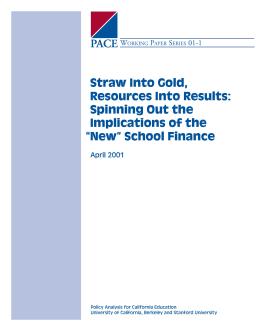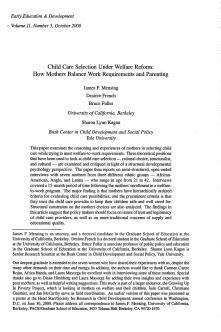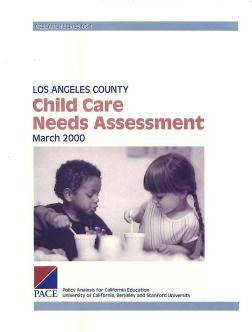Local Innovations Help Working Families
Published
Summary
Many low-income families struggle to afford childcare, even with financial supports. Less than one-fourth of eligible families sign up for subsidies in many communities, leading to disparities in access. The What Works series examines effective programs and policy strategies to increase participation in childcare subsidy programs. The report draws from the Growing Up in Poverty Project, which found highly variable rates of eligible parents using childcare subsidies across CA, CT, and FL. Possible reasons for low utilization and present novel strategies to increase participation are discussed.
Spinning Out the Implications of the 'New' School Finance
Published
Summary
The "new" school finance approach investigates how resources are used within schools and classrooms to enhance educational outcomes, rather than focusing solely on spending patterns. The report reviews literature on resource use in education and suggests that additional funding is not sufficient to improve outcomes. Research should analyze how resources are used within classrooms and schools. Policymakers should develop complementary reforms and enact categorical funding. The report warns that education expenditures keep expanding with little to show for them.
How Mothers Balance Work Requirements and Parenting
Published
Summary
This paper examines how mothers select childcare to meet welfare-to-work requirements. Interviews with seven mothers from different ethnic groups show that trust in childcare providers to keep their children safe is the most important criterion. Structural constraints on their choices are also analyzed. The findings suggest that policymakers should focus on trust and legitimacy of childcare providers in addition to supply and educational quality.
Published
Summary
A study conducted for the Los Angeles County Department of Public Social Services aimed to determine the supply and demand of licensed childcare in the county, with a focus on low-income communities and special types of care. The survey analyzed data at three levels: county-wide, service planning areas, and supervisorial districts. Results showed disparities in childcare supply across the county, with shortages in special types of care and little information on where childcare is needed.
The Influence of Family Structure, Parental Practices, and Home Language
Published
Summary
Latino children are less likely to be enrolled in preschools, even after considering household income and maternal employment. Social factors such as language, child-rearing beliefs, and practices also impact center selection. African American families participate at higher rates, while lower enrollment for Latinos is linked to Spanish-speaking households and cultural preferences. Center selection is part of a broader parental agenda of acculturation to middle-class Anglo commitments to prepare children for school.
California's School Voucher Initiative—Proposition 38
Published
Summary
Proposition 38 allows parents in California to obtain a state chit worth $4,000 and move their child from public to private school, which would significantly affect school financing. This policy brief addresses six key questions about the proposal, including its differences from the 1993 voucher initiative, which families would benefit, how it would impact school spending and taxpayers, and the success of voucher experiments in raising achievement.





